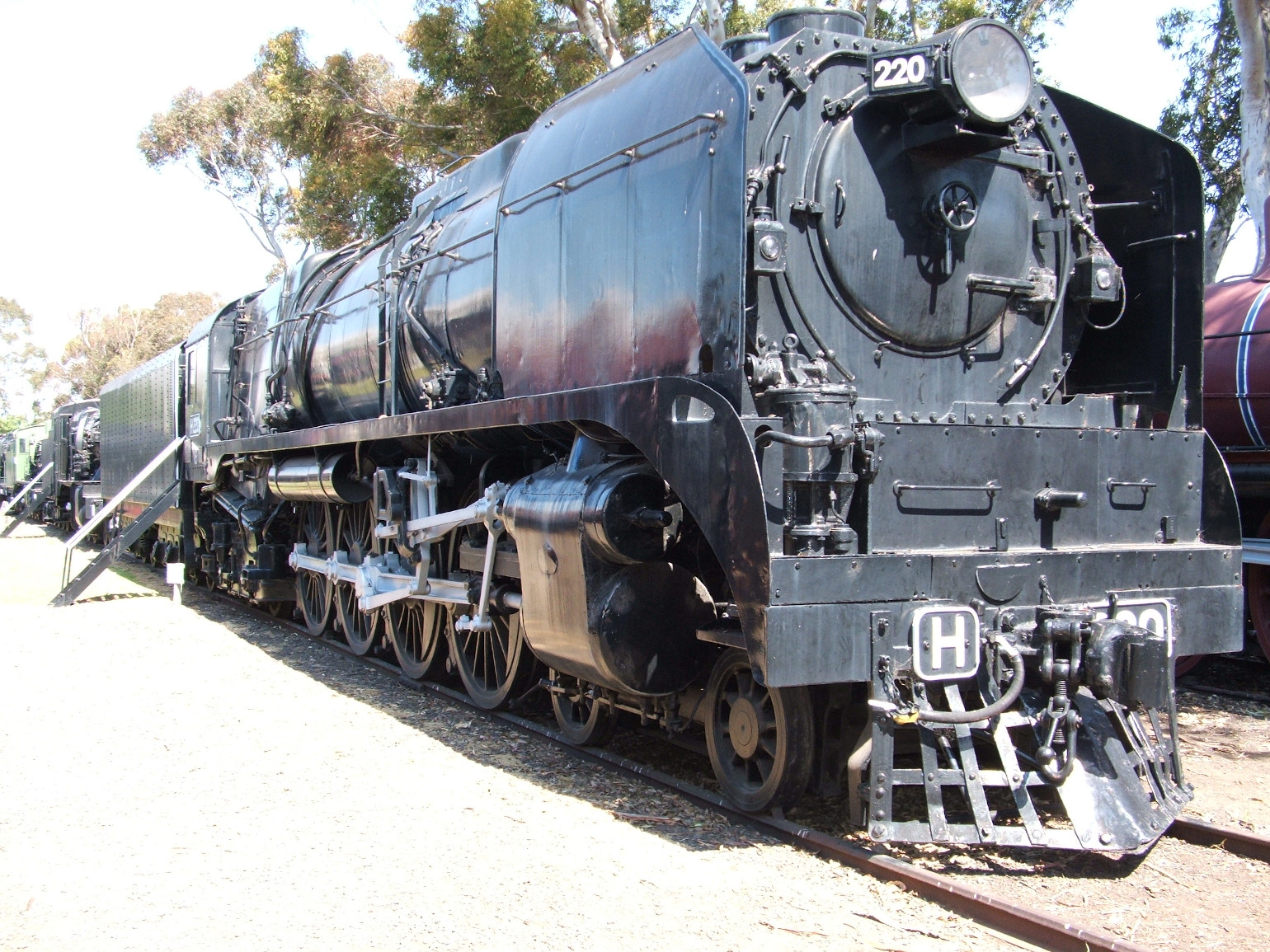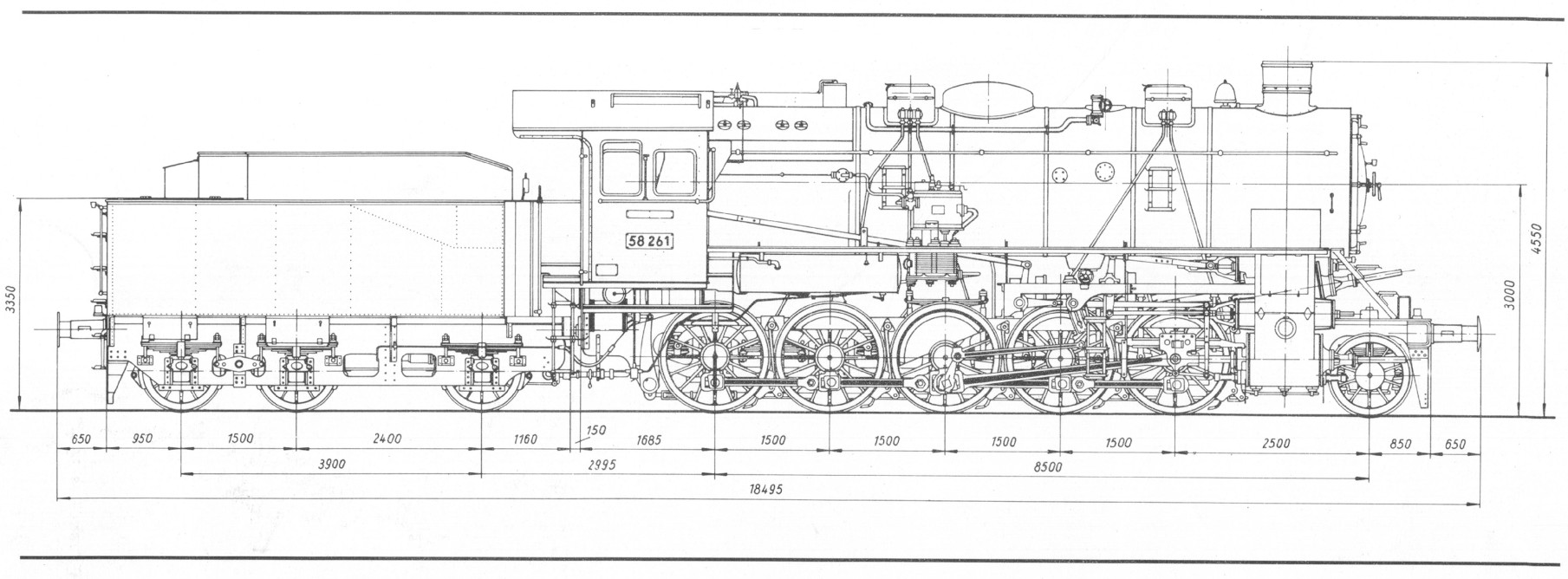
Henschel und Sohn is a German vehicle manufacturing firm that has existed since 1810. It has built cars, trucks, locomotives, tanks and airplanes. The company still exists today but under a new name and ownership. At some point before 1941 the company developed a variation of Holcroft's conjugated valve gear. Up to this point I have been unable to find documentation or schematics of any kind for this gear type and thus a complete understanding of how it works eludes me. As far as I know the only remaining loco with H&S conjugated gear installed is The Victorian Railways H class H220 on static display at the Newport Railway Museum in Melbourne, Australia. It is claimed that the gear type was chosen over Gresley's variant because of its superiority.
A link connects the back of the valve spindle to one of the levers:

I emailed the Newport Railway Museum inquiring about the gear and they informed me that the gear was installed on the Prussian G12/BR 58 Class and gave me a schematic which shows part of the gear.

This is the very first German loco I know of, and second in total, with the gear installed. Using this lead I discovered that there are 4 remaining BR 58's in preservation. I know that two of them have been restored to full operation and been ran relatively recently.
This is excellent news, as now I know of German preservation organizations who have direct experience working with the device. I have emailed the Saxon Railway Museum to inquire about it.
I figured out how it works! I found a video made recently with a clip that has the best view of the gear I have ever seen and it was in motion. From there I was able to infer how it works. It turns out my assumption about how it worked was wrong. It doesn't use rotors to translate the motion, it works just like the standard configuration but it is mounted vertically instead of horizontally. It still does use rotors to transfer the motion between rocking bars though. I have corrected my descriptions of it in all of the relevant pages.
The Saxon Railway museum replied to me saying that my message was completely unintelligible. Google translate doesn't do a good job of translating technical terms. I sent another message to them trying to be as explicit and detailed as possible. Even though I am fairly confident that I understand how it works, schematics, photos, and written documentation would still be great to have.
The Saxon Railway Museum has emailed me back with photos of the gear. Now I am certain I understand how it works.